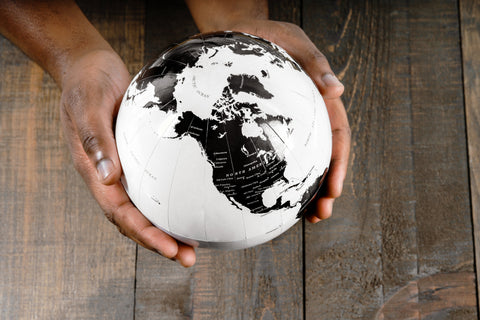The Environmental Impacts of COVID-19

Hate to be the birdie of bad news, but the sudden standstill caused by COVID-19 isn’t decreasing the long-term impacts of human behavior on our planet. That being said, the global pandemic is having some noticeable environmental impacts that are worth exploring.
While the picture painted on social media isn’t fully accurate (people citing vehicle-free city streets allowing for the presence of wildlife as evidence of drastic climate impacts) there are measurable changes. These impacts cannot be taken without including context, like the economic and well-being detriments being caused by the Coronavirus. These climate impacts, while noticeable, are not actually sustainable for a human-inhabited world.
Still, we can learn a few things about how our world is changing in the context of COVID-19, and perhaps use this as an opportunity to motivate global-scale action for our world.
Did Mother Nature send us to our rooms?
It’s no secret that human activity has had an impact on the climate of our planet, with one NASA study finding that “human-generated greenhouse gases and atmospheric particles were affecting global drought risk as far back as the early 20th century.” But it really isn’t fair to blame the sudden economic halt and corresponding climate consequences on anything other than the deadly COVID-19 virus.

But even though she isn’t the cause, Mama Gaia is seeing some benefit. Research at Colombia’s Lamont-Doherty Earth Observatory reported that air pollution has shown 10 percent drops in both carbon dioxide and methane, as well as an astounding 50 percent drop in carbon monoxide since March 13 of this year. This trend is being tracked in other cities like New York, as well.
NASA’s Goddard Space Flight Center has also shown a reduction in air pollution over China. An air quality researcher there noted that, while there is typically an air pollution reduction that coincides with the Lunar New Year, that reduction is much more significant this year. The reason this reduction has outlasted the typical rebound period is likely due in part to the measures taken nationwide to minimize the spread of COVID-19.
With countries worldwide responding with hiatuses on non-essential travel or more intensive lockdown protocol, it is allowing us to see how our planet responds when our domination takes a small step back. However, it does seem like these sorts of trends would be short-lived if life were to resume as normal following the Coronavirus pandemic.
It’s also important to remember that a healthy planet also means fewer diseases, and that not all of the impacts of COVID-19 have been good for the planet.
Certain municipalities have suspended recycling programs over fear of spreading the virus, and food retailers have resumed using plastic bags citing customer concerns over paper. 2020 was also supposed to be a pivotal year for global climate agreement, but talks have been postponed in the wake of COVID.
Additional regulations are being laxed, like the U.S. lowering standards for vehicle emissions and Brazil’s reduced surveillance of the Amazon Rainforest. While these shifts may also be temporary, they paint a slightly less rosy picture of the current state of the world than dolphins in Venetian canals.
What can we learn from COVID-19?
The most important question is this: what can we learn from COVID-19 that might help with climate change? How might worldwide, systemic participation in targeted efforts be able to do what COVID-19 cannot (and shouldn’t be expected to): create a lasting improvement on the climate change issue.

For one, we can examine the results of the models of how different governments or societies have responded to the crisis. Because everyone is responding differently, “We're going to have all these natural experiments that show what worked and what didn't that we'll be able to evaluate as it's going on," said Jeffrey Shaman of Columbia University’s International Research Institute for Climate and Society. Essentially, we’re going to be able to determine or reaffirm theories about how to manage the spread of disease, and how healthcare workforces can be better equipped and supported.
Another potential positive: we’re learning ways to get the job done without having to travel or commute daily. We’re learning in which contexts we struggle without the face-to-face connection, and in which instances perhaps travel can be avoided without greatly impacting or impeding workflow. In Los Angeles, the Environmental Protection Agency recorded its cleanest air day on record during Coronavirus, largely due to a reduction in people driving.
What would the impact be if all these vehicles on the road were replaced with an electronic fleet, reducing these emissions permanently? While a pipe dream now, it’s these sorts of “big ideals” we have to pursue to make change - and that this global pandemic has shown could be actually achievable.
Being able to prioritize electronic communications to reduce day-to-day commuting is only one component, but the global pandemic calls into question air travel as well, for business and pleasure.
Air travel in particular is a big contributing factor to greenhouse gases. A 2018 study published in Nature Climate Change showed that emissions from tourism add up to eight percent of the global total, with flying making up the largest share of this. For perspective, “one round-trip flight from New York to London is the equivalent of about two years of eating meat [in terms of personal carbon footprint].”
While tourism is important to the economy of the places we travel, perhaps we could think more mindfully about how and why we travel, with the intent to spend longer absorbing the place instead of bouncing around from flight to flight.









